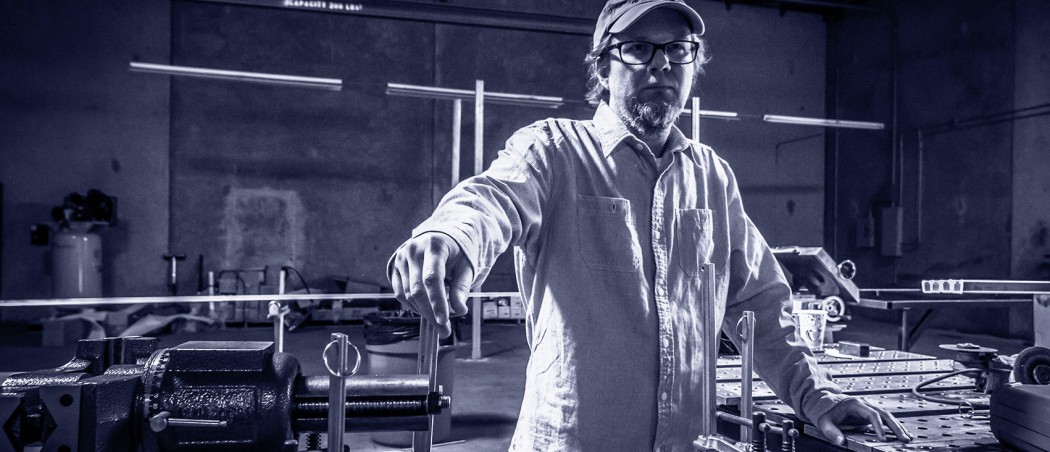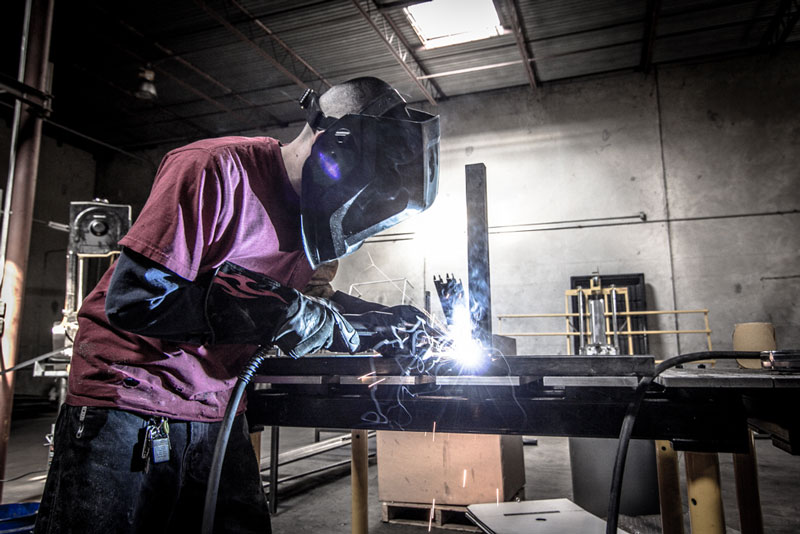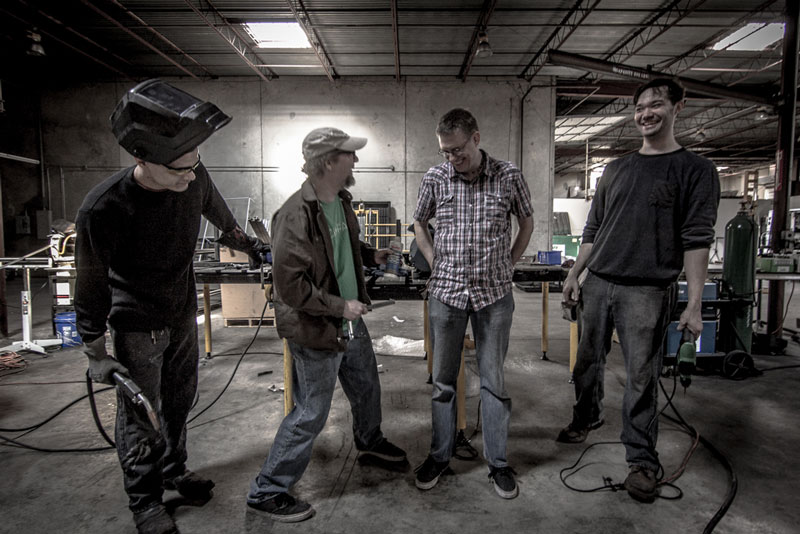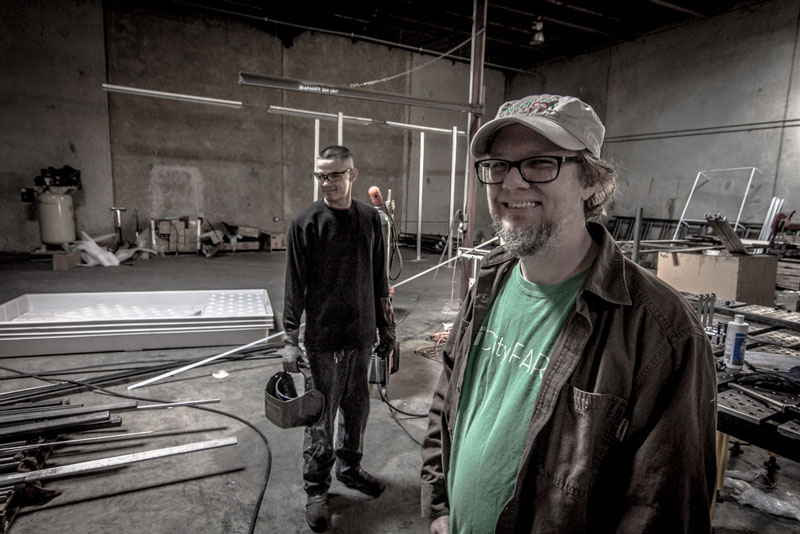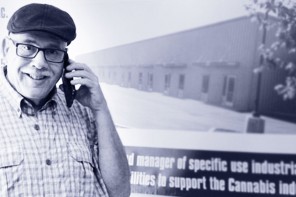Chad Sykes: Indoor Harvest (OTC:INQD)
Let’s take a moment and look at the foundation of the cannabis industry: The plant itself. What does it take to grow such an amazing plant such as this? Resources… a lot of resources. Lights, water, electricity, fertilizer, grow medium, and energy. The carbon footprint of a present-day growing facility is massive; their current methods are out-dated and need to change to ensure that our industry can be sustainable. That is where Chad Sykes, CEO of Indoor Harvest (OTC:INQD), walks onto the scene with his energy-saving aeroponic cultivation systems. He and his team have developed technology that is reducing energy consumption by upwards of 90%! He believes in a strong foundation for our industry and he has a number of ways of how he intends to do that.
What was the deciding factor for you to join this particular industry?
It was a couple things mainly. We originally started out as a vertical farming company to supply equipment to the vertical farming industry and as we started to gain a little bit of traction, people started to notice us. We were getting a lot of people contacting us for equipment, but more than half of these people were in the cannabis industry. At the time, we didn’t have a platform developed for cannabis, but we quickly realized there was an interest and a demand and that this demand far surpassed that of the indoor vertical farming equipment industry. I’m also a veteran and I have friends who are veterans who suffer from PTSD and they use cannabis as a way to treat that, so I know that it’s effective and beneficial. So, long story short, I didn’t really have any issues with cannabis and there appeared to be a demand there for new technology in the industry so we decided to pursue that not too long ago when we reached out to some growers up in Canada and landed a Pilot project to conduct proof of concept trials.
What were you doing before the ‘green rush’?
I spent about 11 years in the construction industry doing plumbing, mechanical plumbing, for large mechanical contractors. It didn’t take me long to move up into a project management position and I began managing entire projects like hospital build-outs, a large project for Budweiser, a dairy operation, a large meat-processing facility for Tyson Foods; I had about an 11 year background in mechanical construction and installation, both plumbing and HVAC.
I joined the military right after 9/11 and spent 5 years in the military, doing two combat tours in Iraq. While I was on my second tour, I had gotten into penny stocks and lost all my money and out of that though, after losing all my money, I got into basically blogging about penny stocks and gained a lot of traction on that and became pretty popular. Eventually, I worked my way into investor relations and found that I had a pretty great knack for promoting OTC companies and doing investor relations. So, I did that for a bit and eventually landed a real investor relations position with a company called Sino Agro Foods, and worked with them for 4 years and built up a shareholder base of over 5,000 people. That was a great success story! Then, in 2008, the financial collapse happened and I got out of the trade, got out of the equities market, and went back to plumbing for a short amount of time.
I got into aeroponics as a hobby initially, but then I started seeing what was going on in the vertical farming industry and I decided to start Indoor Harvest.
I got into basically blogging about penny stocks and gained a lot of traction on that and became pretty popular.
What are you doing to impact the industry?
We strive to bring new technology to the industry and dramatically reduce the cost of goods for cultivation. The technology that we work with is high-pressure aeroponics; I’m not really aware of anybody in the cannabis industry who is producing large scale high-pressure aeroponics for commercial cultivation. The issue with the industry right now, the way I see is, is that the guys who are growing it illegally are using the same cultivation methods as the guys who are growing it legally. In fact, the vast majority of the legal growers are simply scaling up the ways they learned how to grow illegally. There is not a lot of difference between the illegal growing methods and the legal methods and that creates an issue with the black market. The legal guys will always have difficulty competing against the illegal guys because they have all the regulatory burdens, taxes, etc. and will never be able to compete on price unless they are able to scale really large.
Indoor Harvest’s technology can dramatically reduce the cost of goods: You can see almost a 70% reduction in the cost of goods for a number of cultivars; It reduces fertilizer use by about 60%; It can reduce water usage by about 90-98%; And it also speeds vegetative growth by about 15-20%. Most of these guys are using rock wool or coco as their growing medium and with aeroponics, there is no growing medium at all needed. You also eliminate the cost of the rock wool, the coco, and the labor associated with disposing of it. The best way to explain how we are making an impact is this: Think about the alcohol and brewing industry; the way guys are cultivating now is reminiscent of the Copper Steels up in the mountains. What we are trying to do is bring high-tech Budweiser-type large scale industrial equipment to the masses. Yes, the equipment costs more, but you in turn have much more control, better production, more efficient production, and you dramatically reduce your cost of goods. That is our impact!
Describe your work ethic to me in one word.
Innovative.
Tell us about a time in your career that didn’t go as planned and what you did about that. How did you handle it?
The idea of Indoor Harvest derived from a hobby. I’d been messing with aeroponics as a hobby before actually pursuing it as a means for business. Prior to that, I had tried to monetize another hobby – tuner cars, race cars! I had a BMW track car that we had built and were trying to launch a social networking website, ModernTuner.com, and I built this race car up to compete on the Redline Time Attack franchise and invested a lot of money on the car and then started working on the website. It was going to be a typical social network platform that supported advertising; the elemental intent of this project was to just pay for my racing.
The Redline Time Attack was a good deal; they had a pilot setup with a Versus cable and were expecting to get a lot of exposure. But what ended up happening is that Red Line Time Attack, to my knowledge, went bankrupt and they lost the pilots. Basically everything, from there, just evaporated; all the means I had relied on for exposure disappeared and I was just stuck with a really expensive race car. So, what we did to recover from that was to sell the race car and use that money to start Indoor Harvest. I took a huge loss on the car, but I turned lemons into lemonade and that’s what you have to do to keep going!
What book have you read that you’ve been inspired by? Any particular read we should put on our list?
To be honest with you, I haven’t had much time to read books lately! But anyone looking to get into the financial market or is looking to take their company public or is interested in how companies go public should definitely read Using IPO Alternatives to Find Wealth in the U.S. Stock Markets by Michael T. Williams. It’s a very excellent book, very detailed, and it has lent me a tremendous amount of knowledge about the SEC works and how the markets work.
What’s the best advice you’ve ever gotten?
That would have to had to come from the U.S. Army and it was, “Suck it up and drive on!” which basically means that when things don’t go your way, just move on. Don’t dwell on it, just move on!
How would you advise someone looking to join the industry?
The best advice I could give someone is to pick the people they work with very carefully. The problem when you have an industry that is growing this rapidly, is that you have a lot of hucksters and shysters out there that are trying to make a dime off you. We have talked to countless professionals in this space in doing our due diligence to see if this was the space we wanted to enter and when you look at the space as a whole, you realize that it’s littered with bad deals and failed partnerships. So, the best advice I can give is do your due diligence on the people you are partnering with and working with.
What is a skill or trait that you think is necessary to make an impact in this industry?
I would have to say that it’s perseverance. Until we get past all the legal issues between State and Federal, we are going to be continually up against red tape and hurdles. It’s planning ahead and making sure you have enough to get you through the bad times, and ultimately just sticking with it and understanding that regulatory people are going to be standing in your way the whole time. Persevere through it all!
What is the newest knowledge you have for us about the legal cannabis industry?
I think the biggest thing is that it’s not sustainable. I read an article recently that said that over 1% of the electricity being used in Colorado is being used to power grow rooms. That’s just not sustainable and goes right back to the cultivation side of the industry. These guys are using a lot of water, a lot of electricity, and it has to change. We can’t have a carbon footprint that big to produce a plant. New technologies need to come to the market, technologies like ours, that reduce costs, reduce electricity, and utilize new energy-saving technologies.
Something that people need to realize is that the industry, how it is right now, is not sustainable and needs to start adopting more efficient methods, instead of scaling ‘basement grows’ which is essentially what the vast majority is doing.
over 1% of the electricity being used in Colorado is being used to power grow rooms. That’s just not sustainable and goes right back to the cultivation side of the industry.
If we are sitting across from each other, a year from now, how will our conversation about the ‘green rush’ be going?
Well, hopefully we are talking about Indoor Harvest getting some new contracts to build out new state-of-the-art cultivation facilities! I would imagine that we are going to start seeing more experienced capital coming into the industry as it matures and the legal issues start to unwind. And what I mean by that is that I expect we will start seeing more seasoned executives and capital coming into this space and as a result of that, a lot of the first-movers getting gobbled up by the more experienced players and then actually taking the time to understand ROI on their cultivation facilities.

